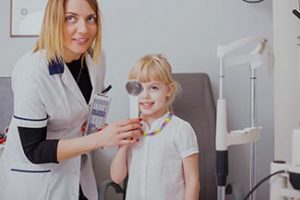Has vision therapy been recommended, but you are unsure of its efficacy and success rate?
As researchers continue to report the efficacy of vision therapy for a range of vision problems, more and more people are eager to know if they too can benefit from this treatment program.
There are many hundreds of evidence-based and peer reviewed published articles on vision therapy.
Below is just a sampling of research studies to help you understand how office-based vision therapy with home-based reinforcement is an effective treatment for a variety of vision conditions, including lazy eye, strabismus (eye turns) and convergence insufficiency, as well as reading and learning difficulties.
7 important vision therapy studies
- Effective Treatment Identified for Common Childhood Vision Disorder
Summary: Although many eye doctors prescribe home-based therapy for children with convergence insufficiency, this study shows that office-based vision therapy, in combination with at-home reinforcement is most effective.
Published by: National Eye Institute (2008), ‘More Effective Treatment Identified for Common Childhood Vision Disorder’: Evidence-Based Treatment for Convergence Insufficiency.
- Best Treatment Determined for Childhood Eye Problem
Summary: Significant improvements found among 75% of the children with convergence insufficiency who attended weekly sessions of office-based vision therapy and completed 15 minutes of at-home exercises, five days a week for 12 weeks.
Published by: Mayo Clinic (2008): ‘Best Treatment Determined for Childhood Eye Problem’ : Treatment of Convergence Insufficiency with Vision Therapy.
- Effective Treatment of Convergence Insufficiency (CI)
Summary: Up to 8.3% of people have convergence insufficiency. This study compares intensive office-based vision therapy with a minimally intensive home-based program. The researchers discovered that intensive office-based vision therapy was most effective.
Published by: Kushner Burton J. ‘The Treatment of Convergence Insufficiency. Archives of Ophthalmology 2005’, 123:100-101. Complete article – PDF version
Contact an eye doctor near you who provides vision therapy if you or your child has been diagnosed with a vision problem that can be treated with vision therapy.
SEE RELATED: Vision Therapy: How Do I Get Started?
- Vision, Learning, and Dyslexia
Summary: Vision problems can affect learning success and should be remediated early on. Vision therapy can improve visual function to help improve reading, writing, concentration, etc. However, vision therapy cannot directly improve academic success, so optometric involvement should be part of a multidisciplinary approach.
Official Statement, approved by the American Academy of Optometry (AAO), American Optometry Association (AOA), American Foundation for Vision Awareness (AFVA), College of Optometrists in Vision Development (COVD), Optometric Extension Program Foundation (OEPF).
A Joint Organizational Policy Statement of the American Academy of Optometry and the American Optometric Association. ‘Vision, Learning, and Dyslexia’. 1997. Complete article – PDF version
- Research on the Efficacy of Vision Therapy for Specific Visual Dysfunctions
Summary: Optometric and ophthalmological research supports the efficacy of vision therapy for treatment of accommodative and vergence anomalies, including strabismus.
Published by: Cooper, Jeffrey. Summary of Research on the Efficacy of Vision Therapy for Specific Visual Dysfunctions. Adapted from The Journal of Behavioral Optometry 1998; 9(5):115-119. Complete article – PDF version
- 6. A Joint Organizational Policy Statement of the American Academy of Optometry and the American Optometric Association
Summary: A policy statement explaining the goals of vision therapy and its effectiveness in treating a wide range of vision conditions.
A Joint Organizational Policy Statement of The American Academy of Optometry and the American Optometric Association. ‘Vision Therapy: Information for Health Care and Other Allied Professionals’. 1999. Complete article – PDF version
- The Amblyopia Treatment Studies: Implications for Clinical Practice
Summary: The Pediatric Eye Disease Investigator Group (PEDIG) uncovers major findings and their clinical implications for the treatment of lazy eye, including optical treatment, patching duration and atropine penalization. In this study, research shows that a reduction in patching time can still yield positive results.
Published by: Angela M. Chen, Susan A. Cotter: Adv Ophthalmol Optom. 2016 Aug’ The Amblyopia Treatment Studies: Implications for Clinical Practice’; Amblyopia Treatment Studies.
LEARN MORE: Guide to Vision Therapy
If you would like to learn more about vision therapy and find out if it is right for you, schedule an appointment with an eye doctor near you.
Vision therapy has been proven as a successful treatment by hundreds of evidence-based studies and clinical trials.









